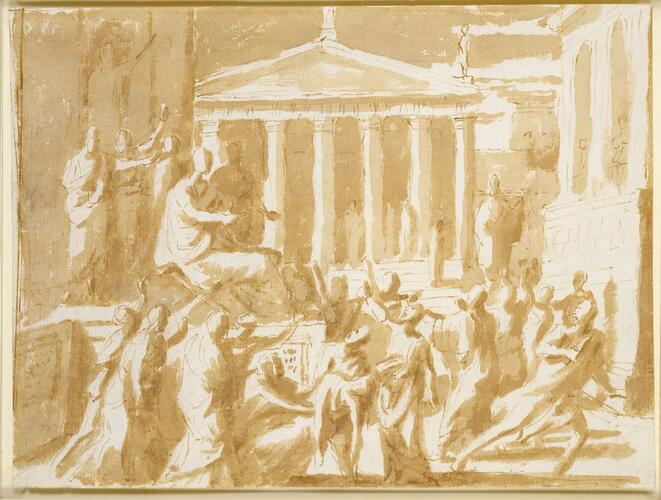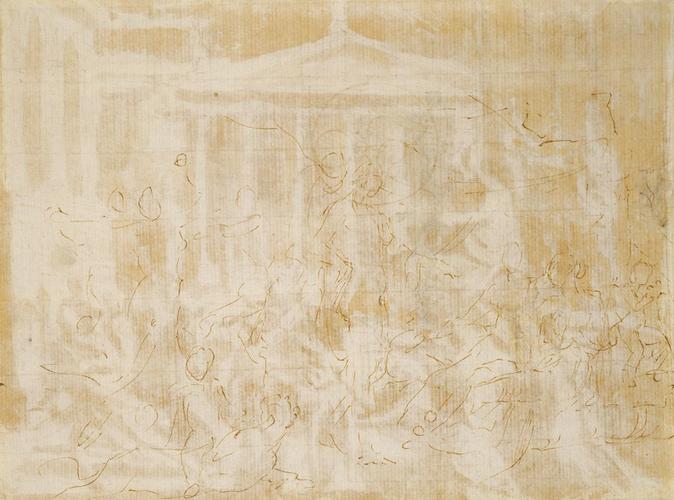-
1 of 253523 objects
The Death of Virginia c.1634-46
Pen and brown ink, brown wash | 17.7 x 23.4 cm (sheet of paper) | RCIN 911888
-
A drawing of a scene before a classical temple: before a seated figure on a dais, a woman collapses in the arms of her companions, while a figure holding a knife flees to the right.
In an episode from ancient Rome recounted by Livy (III, 44-48) and Valerius Maximus (VI, i, 2), the tyrannical decemvir Appius Claudius attempted to procure the maiden Virginia. To save her honour her father stabbed her to death, and the resulting outcry led to the overthrow of the oppressive regime. This is typical of the Stoic subjects close to Poussin's heart, but the drawing is his only surviving treatment of the theme. The occasional depictions by other artists usually showed a centralised composition with the father either in the act of stabbing Virginia, or defiantly brandishing the knife in Appius's face; here he flees in a most unheroic manner. There is no way of knowing whether the drawing is a simple experiment by Poussin - his visualisation of the scene having read an account of the story - or whether it is a study for a lost (or never executed) painting.
The setting, in a forum with a temple in the background, closed on the left by a figure raised on a platform and with a tumult below, is close to the Louvre Rape of the Sabine Women, probably of c.1634. The abstract figure types are superficially similar to such drawings as Moses striking the rock (RCIN 911887) of the mid-1640s, but the formal abbreviations and suggestive use of two tones of wash, the darker in small dabs for compositional emphasis, are stylistically much closer to the group of luminous drawings of the mid-1630s that includes St Mary of Egypt and St Zosimus (911925), Bacchus discovering Ariadne (911911), and the Finding of Queen Zenobia (911895).
On the verso is a brief sketch of Bacchus discovering Ariadne, studied again on 911911.Provenance
Probably Cassiano dal Pozzo (1583-1657); from whose heirs bought by Pope Clement XI, 1703; passed to his nephew, Cardinal Alessandro Albani, 1714; from whom acquired by George III, 1762.
-
Creator(s)
Acquirer(s)
-
Medium and techniques
Pen and brown ink, brown wash
Measurements
17.7 x 23.4 cm (sheet of paper)
Object type(s)
Other number(s)
RL 11888


